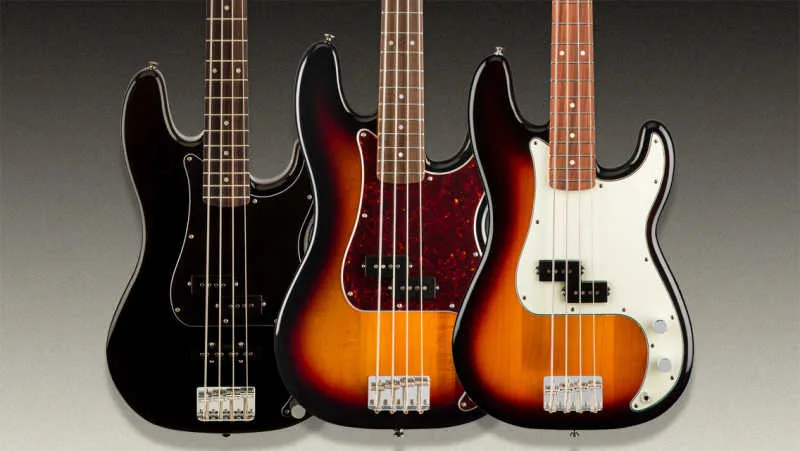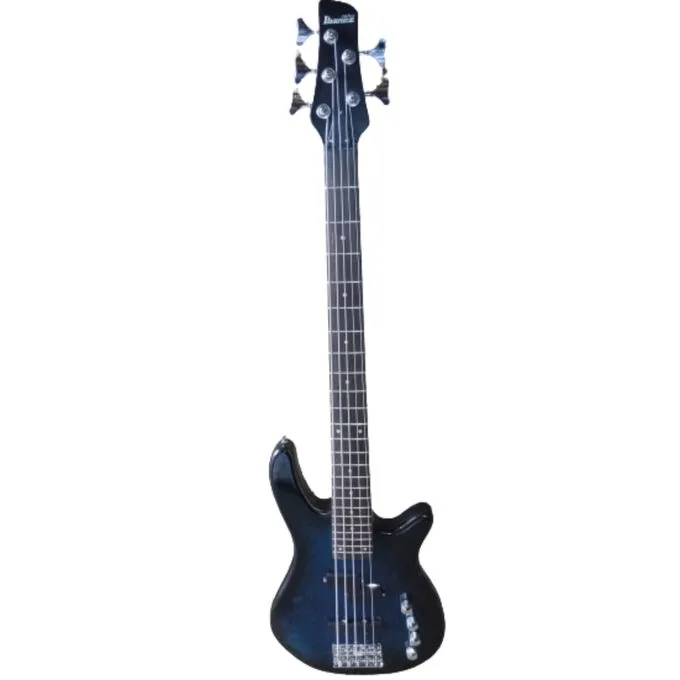“How much for a bass guitar?” This is a question that many aspiring musicians, including myself, have asked at some point. And it’s no wonder- with so many different brands and models on the market, it can be overwhelming to figure out how much you should be spending on one. But fear not! I’ve been playing the bass for years and have done extensive research to bring you this ultimate buying guide and price ranges for bass guitars.
In this article, we’ll cover everything from the different types of bass guitars available and their corresponding price ranges, to what features you should look for in a quality instrument. We’ll also discuss common mistakes beginners make when purchasing their first bass guitar and how to avoid them. By the end of this guide, you’ll feel confident in knowing exactly how much to budget for your next purchase. So grab your notebook and let’s get started on finding the perfect bass guitar for you!
So, how much for a bass guitar?
The price for a bass guitar can vary greatly depending on the brand, quality, and features. Generally, you can expect to pay anywhere from $100 to $3000 or more for a bass guitar.
At the lower end of the price range, you will find beginner-level instruments that are perfect for those just starting out or looking for a budget-friendly option. These bass guitars may not have all the bells and whistles of higher-priced models but they still provide decent sound and playability.
In the mid-range price point (around $500-$1000), you will find high-quality bass guitars with better craftsmanship and materials. These instruments are great for intermediate players who want to upgrade their sound without breaking the bank.
For professional musicians or serious enthusiasts, there are top-of-the-line bass guitars that can cost upwards of $2000-$3000. These instruments boast superior construction, premium materials, and advanced features that result in exceptional tone and performance.
Ultimately, it’s important to consider your skill level, budget, and personal preferences when determining how much to spend on a bass guitar. With so many options available at different price points, it’s possible to find a quality instrument that meets your needs without breaking the bank.
Understanding Different Types of Bass Guitars and Their Price Ranges
When diving into the world of bass guitars, it’s fascinating to discover the variety that exists. Each type brings its own charm and sound, appealing to players in unique ways. For instance, there are four-string basses, which are the most common. These instruments typically range from $200 for beginner models to over $2,000 for high-end versions. Then you have five-string and six-string basses, which add extra strings for more versatility in playstyle and tuning options. These can start around $400 and soar up beyond $3,500 depending on brand reputation and craftsmanship. Additionally, there’s a growing interest in fretless basses; these offer a smooth playing experience without frets but may cost between $600 to $4,000 due to their specialized design.
The material used in building a bass guitar heavily influences its price as well. For example, solid wood body types often deliver richer tones compared with cheaper laminated wood alternatives. Most budget models use materials like plywood or composite woods that can be very affordable but might lack warmth of sound quality.
Choosing an instrument isn’t just about what sounds good; it’s also about how it feels while playing! Whether you’re drawn towards vintage designs or modern aesthetics, understanding these differences helps create informed decisions when shopping within any specific price range.

Read also: 1 4 size nylon string guitar
What Features to Look For in a Quality Bass Guitar
When searching for a quality bass guitar, there are several key features to consider that can greatly affect your playing experience. First and foremost, the body shape plays an essential role in comfort and sound. Common styles like the Fender Precision or Jazz offer distinct tones due to their unique designs. Additionally, think about the wood type; different woods produce varying sounds. For example, mahogany tends to give a warm tone while ash offers brightness. The neck also deserves attention; it should be smooth and easy to navigate since you’ll spend plenty of time fretting notes.
Another important feature is the pickups. These magnetic devices capture the vibration of the strings and convert them into sound waves. Passive pickups deliver a more traditional tone with less electronic interference, while active pickups provide enhanced clarity and volume control—ideal for those looking for versatility in their sound. Finally, don’t forget about hardware elements like tuning machines and bridges; they influence stability as well as playability. Having reliable tuners ensures that your bass stays in tune even through vigorous playing sessions! In summary, taking time to examine these features will help you find a bass guitar that matches your style perfectly.
Common Mistakes Beginners Make When Purchasing Their First Bass Guitar
Many first-time bass guitar buyers face a few common missteps that can turn an exciting purchase into a frustrating experience. One of the biggest errors is not trying out different instruments before making a decision. Each bass has its unique feel, sound, and weight. It’s essential to physically play several models to find one that fits comfortably in your hands and feels good against your body. Beginners often focus on flashy designs or low prices without considering how the bass will actually perform when they start playing.
Another mistake involves overlooking the importance of proper setup after purchasing a guitar. A new bass might look perfect but could require adjustments like changing string height or intonation for optimal playability. Without these tweaks, even an expensive model might sound off-key or be difficult to play.
Additionally, beginners sometimes neglect essential accessories such as a quality strap and tuner, thinking they are optional luxuries rather than necessities.
- A well-padded strap makes long practice sessions comfortable.
- A precise tuner helps keep chords sounding great.
By avoiding these pitfalls—testing instruments thoroughly and ensuring proper setup—new players can embark on their musical journey with confidence and joy!
How To Avoid Overpaying and Underplaying: Choosing the Right Budget for Your Bass Guitar Instrument
When you’re diving into the world of bass guitars, finding a budget that suits your needs can feel like a tricky balancing act. To avoid overpaying, start by researching different brands and models. Some instruments come with extra features or fancy designs that might catch your eye but won’t necessarily improve your playing experience. Look for beginner-friendly options without too many bells and whistles; they often provide excellent sound quality at more accessible prices. Check out user reviews and consider visiting local music shops to test various guitars firsthand, allowing you to hear their unique tones and feel how they fit in your hands.
On the flip side, it’s equally important not to underplay when making this choice. A good bass guitar is an investment in your musical journey, so opting for the cheapest model might leave you frustrated down the line. Set aside some time to think about what style of music you enjoy most—this will help guide your selection process. Consider saving up a bit longer if needed; investing in something durable will enhance both playability and enjoyment over time.
Ultimately, striking the right balance between cost and quality ensures that you’ll make sweet music for years to come!
You may also like: Who taught Morgan Wallen to sing
Conclusion: Confidently Buying Your Next Bass Guitar Within An Appropriate Price Range
When it comes to buying a bass guitar, finding the right balance between quality and price can feel like searching for treasure. It’s important to remember that not all instruments are created equal; some deliver rich tones while others may sound flat. The first step is to define your budget clearly. Having a set price range helps narrow down your options and keeps you from getting lost among various brands and models. Look for features that suit your playing style, such as the type of wood used in the body or the pickups’ configuration, as these elements greatly affect sound quality.
Once you’ve established a comfortable spending limit, it’s time to explore what each brand has to offer within that range. Check online reviews or visit local music stores where you can test out instruments firsthand. Don’t hesitate to ask knowledgeable staff for recommendations tailored specifically for you! Also consider potential additional costs like necessary accessories—like an amplifier or case—that might influence your overall expenditure. By being confident in both your research and choices, you’ll not only find a stunning instrument but also ensure it aligns perfectly with your musical journey without breaking the bank!

